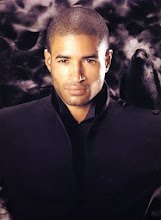Take The Hunger Games. I love both the books and the film franchise, but I know people who have problems with both. Some book lovers rebelled against the casting--Jennifer Lawrence, though wonderful, is not the physical type of Katniss at all, just as Josh Hutcherson isn't--while some film lovers preferred the plot choices made onscreen rather than those on the pages. I love both because I'm not trying to compare them to anything, which is where I think a lot of people fail.
It's an amazing story, but the film was just as magnificent. In order to recreate the feeling of being locked-in, the director, Julian Schnabel, shot the first thirty minutes from the perspective of Bauby, after we wakes up from the coma he was in from the stroke. He can't move, so people move in and out of camera. We hear his internal monologue, but we're as mute as he is when the people around him answer their own questions to him. When the doctor has to sew his right eye shut to keep it from going septic, we're there, in his head, watching darkness fall as it's stitched together.
It's a stunning choice. We don't even see what Bauby looks like until a half hour into the movie. By that point, you're so much a part of him, it's as jarring for us as it is for him when he sees his reflection.
The book is so much about communication and how we do or do not succeed at it that I wondered how a film would capture that quality. It does so in a myriad of ways. Through Bauby's internal monologue. In flashback scenes where we see the pieces of his life before the stroke. In the occasional dream sequence where he tries to recapture some of the sensations that are now denied him. Every single element works.
I can't recommend the book and movie highly enough. Both are beautiful, gut-wrenching pieces of work. They resonate on universal levels without becoming maudlin. Get the book. Watch the movie. You won't be disappointed.





0 comments:
Post a Comment